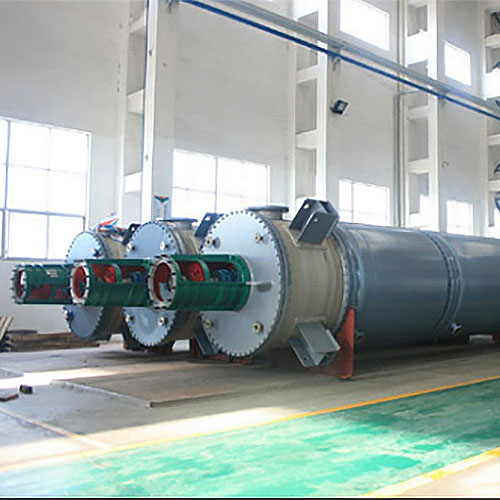Why Is the Industrial Wiped Film Evaporator Essential for High-Efficiency Thermal Separation?
2025-06-26
In the realm of chemical processing, pharmaceuticals, food production, and cannabis extraction, the industrial wiped film evaporator (WFE) stands out as a critical piece of equipment for high-precision thermal separation. Its ability to handle heat-sensitive and viscous materials with minimal degradation makes it a preferred choice over conventional evaporation methods. But what exactly is a wiped film evaporator, and
why is it so valuable in industrial applications?

What Is an Industrial Wiped Film Evaporator?
An industrial wiped film evaporator is a specialized thin-film evaporator designed for the continuous separation of volatile components from high-boiling or heat-sensitive liquids. It works by creating a thin, turbulent film of product on a heated cylindrical surface, while rotating wiper blades distribute and agitate the film evenly. As the film flows downward, volatile compounds evaporate, and heavier residues are collected separately.
How Does It Work?
1. Feed Introduction: The liquid feed enters the top of the evaporator.
2. Film Formation: Rotating wiper blades spread the liquid into a thin film along the heated wall.
3. Evaporation: The thin film allows rapid heat transfer, causing volatile components to vaporize instantly.
4. Vapor Separation: The vapors move to a condenser and are collected.
5. Residue Collection: The non-volatile fraction exits through the bottom discharge.
This efficient and gentle process helps preserve quality and purity, even with delicate compounds.
What Are the Key Advantages?
1. Gentle Processing for Heat-Sensitive Materials
Short residence times and low operating pressures reduce thermal degradation—ideal for vitamins, essential oils, CBD/THC, and pharmaceuticals.
2. High Evaporation Efficiency
The thin film ensures rapid and uniform heat transfer, making WFEs highly efficient even for viscous substances.
3. Vacuum Operation
Most WFEs operate under vacuum, lowering the boiling point of liquids and improving energy efficiency.
4. Continuous and Scalable
Suitable for both batch and continuous operations, with modular scalability for industrial-scale production.
5. Low Fouling and Easy Cleaning
The wiping action reduces fouling and allows easier cleaning, ensuring better uptime and product consistency.
Where Are Industrial WFEs Used?
Pharmaceuticals: Concentration and purification of APIs, vitamins, and intermediates.
Cannabis Industry: Distillation of cannabinoids for high-purity THC/CBD oils.
Chemical Processing: Separation of solvents, monomers, or high-molecular-weight materials.
Food & Flavors: Evaporation of flavors, fragrances, and essential oils.
Polymers and Plastics: Solvent recovery and purification of resins or additives.
Key Design Options and Features
Material of Construction: Stainless steel, Hastelloy, or glass-lined versions for corrosive applications.
Wiper Types: Roller or blade wipers, selected based on product viscosity and sensitivity.
Heating Systems: Electric, steam, or hot oil jacketed designs.
Integrated Condensers: For efficient recovery of distillates.
Conclusion
An industrial wiped film evaporator is a powerful tool for thermal separation of complex, sensitive, or high-viscosity mixtures. Its superior heat-transfer efficiency, low residence time, and ability to operate under vacuum make it indispensable in industries that demand product integrity, purity, and scalability. As precision separation and solvent recovery continue to gain importance across sectors, WFEs are positioned as a cornerstone technology in modern thermal processing.


